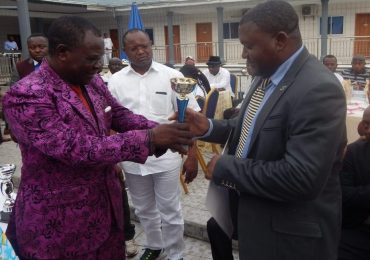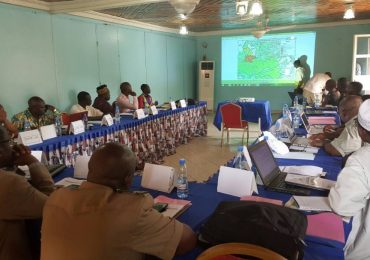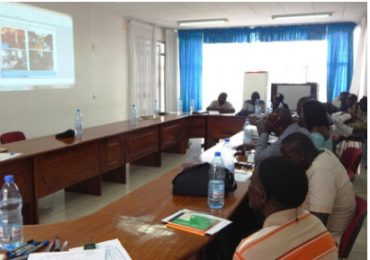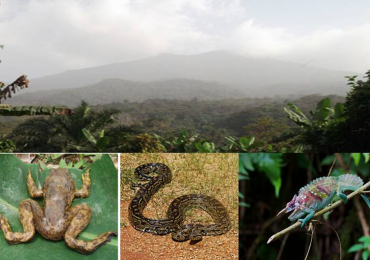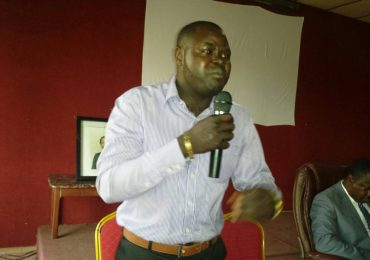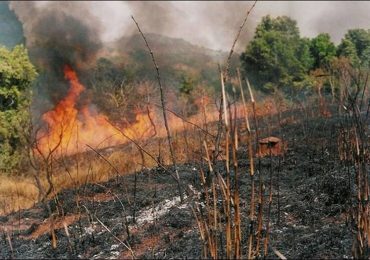When it comes to conservation, only one thing is guaranteed: Resistance from beneficiary communities. For conservationists, getting a useful message across to communities is not always all in a day’s work. Sometimes, it is fiendishly difficult.
Interview with Immaculate Mkong
On July 28, 2014, FFI (Fauna & Flora International) West Africa Programme Manager, Alison Mollon, landed in Cameroon and after about a fortnight assessing environment conservation NGO, ERuDeF’s projects, was especially impressed with the number of different projects going on across a wide scope of conservation interventions. She said it is clear that ERuDeF staff have developed a good relationship with the various communities where they have worked and this is enabling the work to continue in the field. Mollon observed that a difficulty, which ERuDeF faces, is that generally beneficiaries and other stakeholders such as government officials think that the NGO and partners such as FFI are available to solve all problems thus. According to her, awareness raising in what conservation organisations do and what is not under their responsibility could be beneficial.
“Stakeholders would benefit from understanding that they also have a role to play and it is a partnership with them as well, be that in the form of lobbying their government for other development needs or making sure they take care of equipment so that it lasts,” Mollon told The Green Vision.
Excerpts:
The Green Vision: Could you recommend some strategies that would facilitate ERuDeF’s conservation efforts and those of other conservation NGOs?
Alison Mollon: There are many challenges facing the field staff and I think they could benefit from a harmonized communication policy, which would firstly help them when making difficult decisions in the field and strengthen ERuDeF’s position in terms of getting important messages across. Communication is often thought of as an external issue. However, the way ERuDeF staff communicate is equally if not more important. Giving staff training on the messages that they should be disseminating would be very beneficial and I would also recommend that the same training is given to volunteers. Although volunteers can bring many benefits to a project, ERuDeF should also realise that they carry a risk as they can often not be trained conservation professionals and may not have the understanding that ERuDeF staff have of the problems that they face. Communities may also not perceive the difference between a volunteer and ERuDeF staff or even other visitors such as funders, thus even though ERuDeF may know that they do not represent ERuDeF, external stakeholders will not think this. Therefore, giving a briefing to volunteers on the issues they might face in the field and how they should respond would be greatly beneficial.
A further example of a specific policy or communication that could help ERuDeF is a policy on ‘motivation’. Different field teams operate in different ways and thus the message coming across will be very mixed. Although field teams often say they may give motivation (such as purchase of alcohol) from their own funds and not project funds, the message received by communities is the same. As there is now expectation amongst villagers that they will receive something, this will be a difficult habit to break. Nevertheless, it will be easier now than in the future and will have to be done at some point. In fact, the longer the giving of motivation goes on, the higher the risk for ERuDeF as the difficulty of communities will become stronger the longer the practice continues. Then again, it would be extremely beneficial for ERuDeF to implement M&E (Monitoring and Evaluation) policy across all activities to monitor their effectiveness in the field. This would not only enable ERuDeF to ensure that the work they are doing is effective and efficient but also that this can be communicated to donors who often require this information before they will agree to fund. This is something that FFI could assist with.
What are some changes that you would like to make as far as this partnership is concerned?
I think the partnership can yield much higher collaboration although we should also work under the understanding that we are two separate organisations and we have our own policies and agendas. There will be occasions where we come together but that it is also ok if things are developed separately.
There are also some areas where it would be beneficial to harmonize, for example where the Tofala Hill gazettement process is not yet finalized, there is a risk to this process by starting another gazettement process before the first is finished, therefore where ERuDeF strategy may have a level of risk to combined projects, this should be discussed together.
Are there some areas in ERuDeF programs and activities you would like to be developed?
I would like to develop the M&E program as I think this is imperative to future work and ensuring that conservation activities remain effective. It is also important to document what isn’t working so we can learn from our experiences and ensure that future work remains efficient. I would also like to develop the internal communications policy with ERuDeF as far as applied conservation is concerned, I believe this will harmonize all work streams and efforts across the conservation agenda and ultimately make the messages we put out much stronger and more effective.
I think the gender work that ERuDeF would like to explore is very important and the lean-in initiative could be a good starting point for exploring work here. As a conservation professional, I see a lot of interesting work taking place, like the Green Vision which I am very impressed with. A challenge that faces all organizations when activities cut across a lot of different aspects is achieving good collaboration between the different departments.
Besides sometimes being misunderstood, ERuDeF often goes the extra mile braving difficult terrain to reach out to communities with its conservation dreams, vision and hopes for a more mutually and sustainable interaction with the environment.



